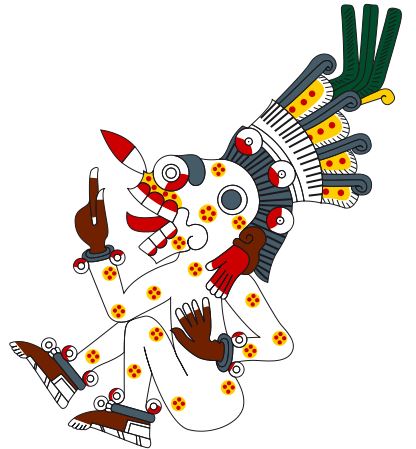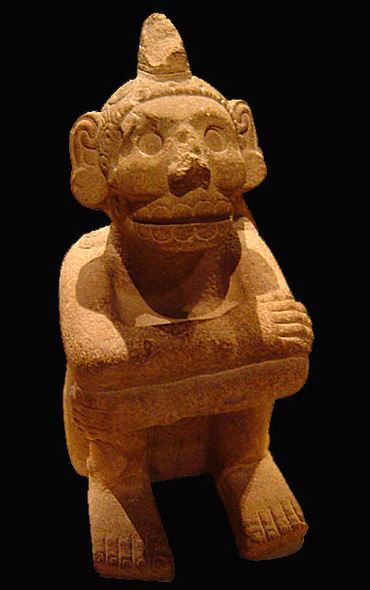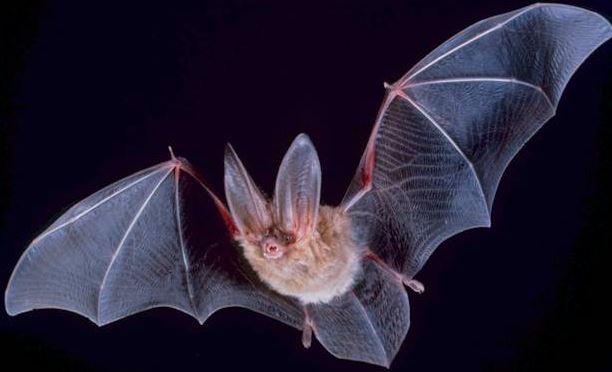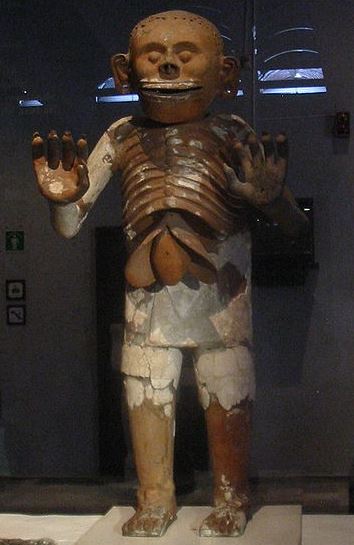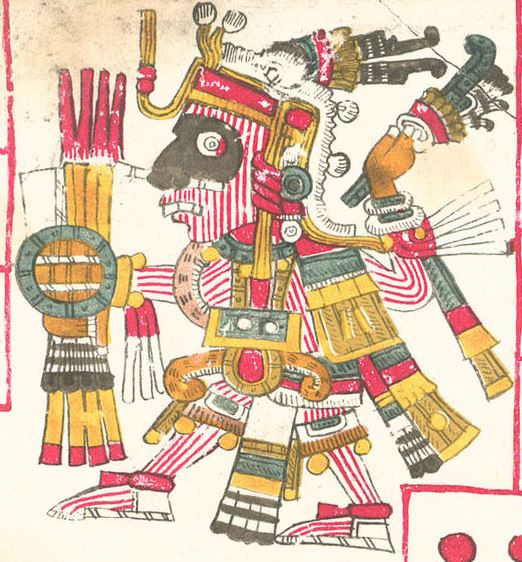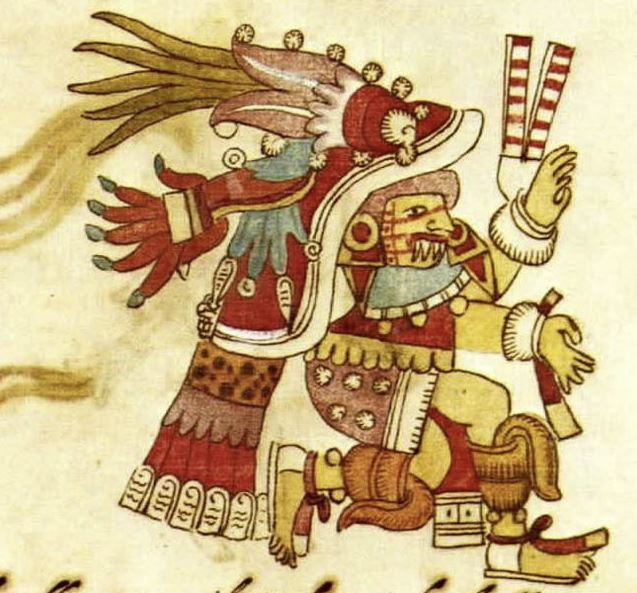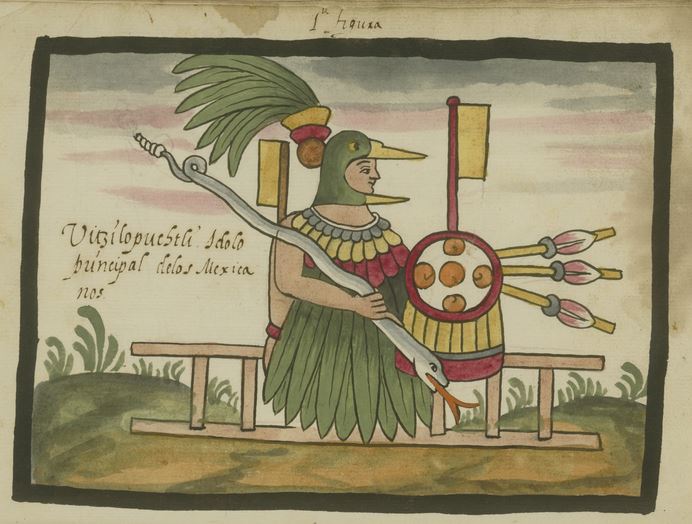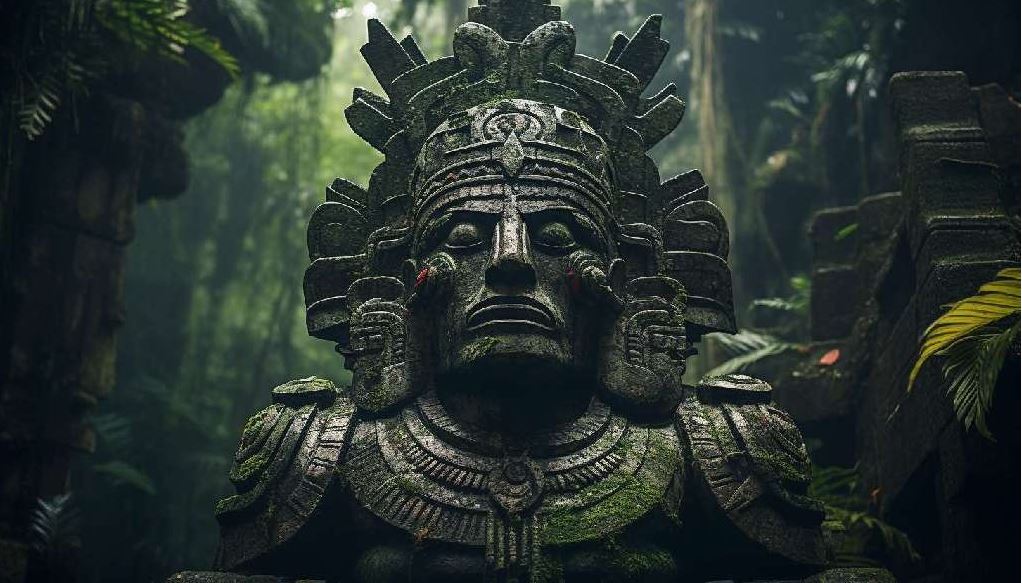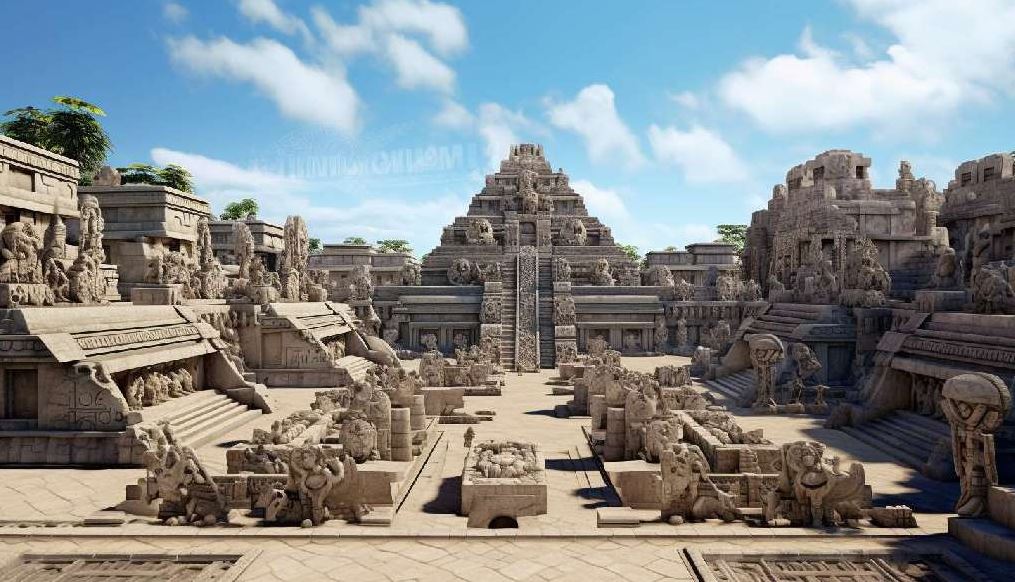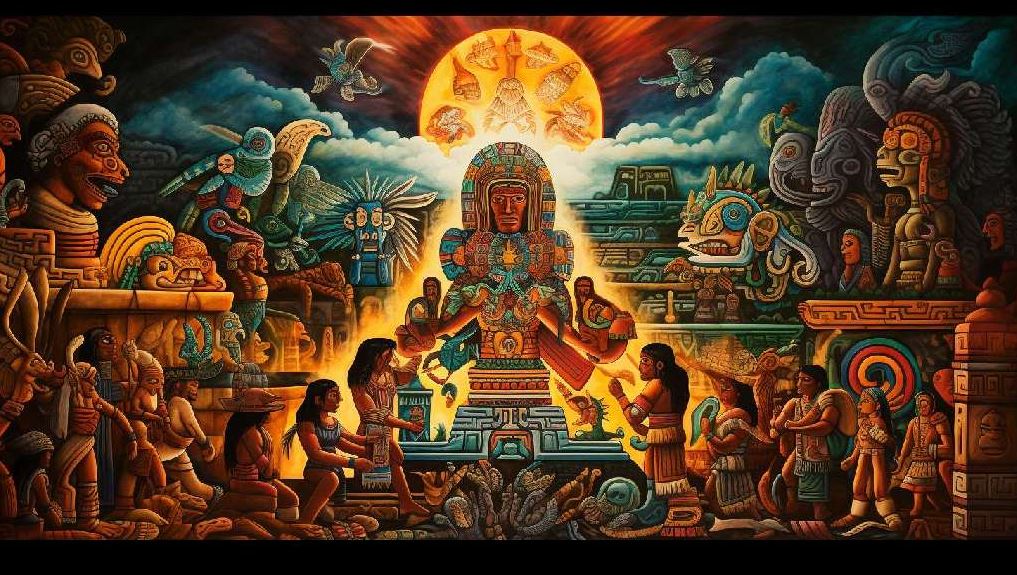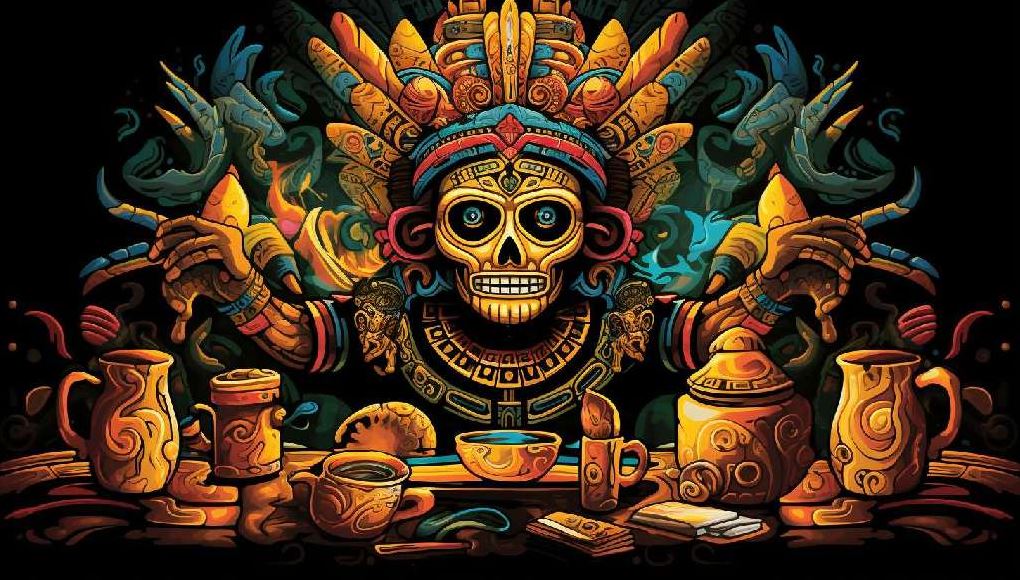The Aztec God of Death Mictlantecuhtli and the Lord of The Underworld
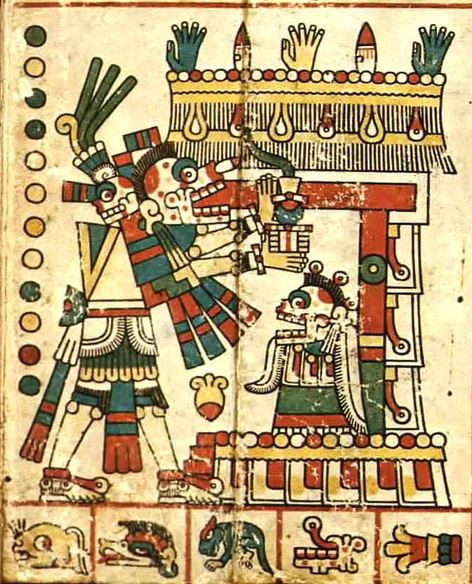
To rightly introduce the figure of the Aztec god of death Mictlantecuhtli, and his role in the Aztec pantheon, it is advisable to give some notions about the Aztec ideas about what happened to people after they were dead.
The afterlife was an important concept for the Aztecs. They believed that many afterworlds existed and that souls went to one or to another of them according to the way they were dead.
Men who died in battle or as sacrificial victims went to the eastern sky, where they accompanied the morning sun. Women who died giving birth to a child also went to the sky, this time at West, where they accompanied the setting sun.
People who drowned, or who died of a watery disease linked to the rain god Tlaloc, went instead to that god’s paradise, Tlalocan. The majority of people, i.e. those who died a normal, inglorious death, were instead destined to the subterranean realm of Mictlan, the Aztec Underworld.
Mictlan would have been divided into nine sections. Dead people destined to it had to cross all these levels in a time of four years. This journey was full of perils, from rivers and mountains to cross to arrows and obsidian knives to avoid.
When successful, the dead souls ended up in the ninth section, the one situated at the greatest deepness and at the extreme north, where they were put to rest forever. Some scholars call “Mictlan” only this last part of the Underworld.
What was Mictlantecuhtli the god of?
The Aztec god Mictlantecuhtli was the god of the Underworld, the one who ruled over Mictlan.
Though many Aztec deities had a link to death, Mictlantecuhtli was surely one of the most important and was therefore widely worshipped. A proof of this fact is visible in the archeological site of Tenochtitlan, in the center of the actual Mexico City.
Tenochtitlan was the capital of the Aztec Empire at the time of its conquest by the Spanish, and in it, among other things, two life-size statues representing the Aztec god of death Mictlantecuhtli have been found.
Usually, the Aztec god of death Mictlantecuhtli was represented as a skeleton having red spots on his body. His eyesockets contained eyes, despite his head was a skull, and he bore a great number of ornaments: a necklace made of human eyeballs, a headdress with owl feathers, and paper banners
A representation of Mictlantecuhtli
It seems that the celebrations dedicated to the Aztec god Mictlantecuhtli involved, at least on some festivities, a form of ritual cannibalism, a practice known to have been occasionally employed by the Aztecs.
Aztec god of death Mictlantecuhtli: Origin of the Name
The name “Mictlantecuhtli” means “lord of Mictlan” in Nahuatl. Mictlantecuhtli’s name, therefore, simply presents him as the god who presided to the Aztec Underworld, the reign of Mictlan.
The word “Mictlan”, in turn, came from the Nahuatl word “miqui”, which meant “to die”, with the adding of the suffix “-tlan”. The Aztec god of death Mictlantecuhtli was also called in other ways: his other name “Ixpuztec” means “broken face”, while his epithets “Nextepehua” and “Tzontemoc” signify “he who scatters ashes” and “the one who lowers his head”, respectively.
History of the Aztec god Mictlantecuhtli and Most Important Myths Related to Him
The Aztec god of death Mictlantecuhtli was thought to have been put on the throne of Mictlan by the creator gods Quetzalcoatl and Tezcatlipoca.
There, he was said to live in a mansion without windows, together with his wife Mictecacihuatl. These two divinities of death, Mictlantecuhtli and Mictecacihuatl, were considered to be complements to the divine couple of life, formed by the fertility god Ometecuhtli and by his wife, the goddess Omecihuatl
A piece of Mictlantecuhtli art
Though Mictlantecuhtli owed to Quetzalcoatl his role of lord of Mictlan, he was said to have tried to trick Quetzalcoatl during his attempt to recover the bones of the dead in order to create new inhabitants for the world. Let’s see this story in wider detail.
The Trick of the Aztec god of death Mictlantecuhtli and Quetzalcoatl
At the time when the present world was created by Quetzalcoatl and Tezcatlipoca, it was void and lifeless, since all the living beings had perished in the destruction of the preceding world.
In order to populate it, Quetzalcoatl and Xolotl went to Mictlan to recover the bones of the dead: they could in fact use them to create a new race of men.
The Aztec god of death Mictlantecuhtli agreed to give the bones to Quetzalcoatl if he would complete a simple task: he asked him to go up and down his realm four times, accompanied by the sound of a shell trumpet.
The deed seemed simple indeed, but it proved to be a trick: the shell lent by Mictlantecuhtli to Quetzalcoatl, in fact, had no holes, and could produce no sound. Anyway, Quetzalcoatl managed to beat Mictlantecuhtli: he asked the worms to pierce the shell and the bees to sound it, in order to fulfill the request.
Angered, the Aztec god of death Mictlantecuhtli ordered a pit to be excavated as a trap for Quetzalcoatl. The latter god was actually pushed by a quail into the pit together with the bones, which were then gnawed by the animal.
In the end, Quetzalcoatl managed to escape Mictlan with the bones, but they were broken and, therefore, differed in size. This explains why the men, which were created by those bones, actually have different heights.
Mictlantecuhtli statue
Powers of the Aztec god of death Mictlantecuhtli
Though his importance, Mictlantecuhtli was not thought to possess particular powers.
He was thought to be strong and violent, though: his portraits often depict him in an aggressive posture, a fact that is thought to represent his attitude to attack and destroy the souls of the dead as soon as they came into his presence.
Symbols of the Aztec god Mictlantecuhtli and Their Meanings
Apart from bones and skulls, animals like bats and owls were considered to be symbols of Mictlantecuhtli story.
The bat, one of the main symbols of the Aztec god of death Mictlantecuhtli
Though not explicitly stated, it is plausible that they could represent Mictlantecuhtli’s dark and obscure character, since they are nocturnal animals.
Additional Aztec god of death Mictlantecuhtli Facts
Like others among the main Aztec deities, also Mictlantecuhtli was worshipped in particular moments of the day and of the year.
He was linked to the 11th hour of the day, and to the sixth day of the week which, among the Aztecs, comprised 13 days. Besides, he was one of the Lords of the Night, a set of nine deities who were also called the Yoalteuctin.
Each god in this group presided to some nights of the Aztec calendar; these groups of nine nights formed a cycle that repeated itself, always in the same order, 29 times during the year.
Mictlantecuhtli statue

